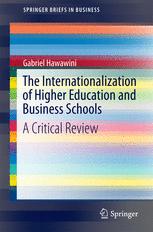

Most ebook files are in PDF format, so you can easily read them using various software such as Foxit Reader or directly on the Google Chrome browser.
Some ebook files are released by publishers in other formats such as .awz, .mobi, .epub, .fb2, etc. You may need to install specific software to read these formats on mobile/PC, such as Calibre.
Please read the tutorial at this link: https://ebookbell.com/faq
We offer FREE conversion to the popular formats you request; however, this may take some time. Therefore, right after payment, please email us, and we will try to provide the service as quickly as possible.
For some exceptional file formats or broken links (if any), please refrain from opening any disputes. Instead, email us first, and we will try to assist within a maximum of 6 hours.
EbookBell Team

5.0
20 reviewsThis book provides a critical review of the internationalization process among higher education institutions (HEIs), taking a closer look at the case of business schools. The first part offers a novel definition of this phenomenon and examines the forces that drive international initiatives. It then examines and explains the “internationalization paradox”: the observation that despite evidence that many international initiatives fail to deliver what they promise, for the heads of HEIs they nevertheless remain at the top of the agenda. In turn, the second part of the book develops a unifying framework that identifies alternative models of internationalization and explains how they relate to one another. Based on this framework, the book presents a model of the truly global HEI, whose mission is to learn from the world rather than teach the world what it knows.
The book’s central thesis is that it is unlikely that HEIs will be able to transform themselves into truly global HEIs because of historical and organizational barriers rather than a shortage of resources or a lack of visionary leadership. The book concludes that most HEIs should refrain from claiming that their aim is to become global institutions, and should instead focus on the successful implementation of an import-export model of internationalization that calls for initiatives such as the internationalization of the curriculum, the creation of student and faculty exchange programs, and the participation in international academic and research partnerships. Any attempt to transform themselves into truly global institutions is unlikely to succeed and may distract them from their fundamental mission: to educate their home-based students and help them become effective global citizens.